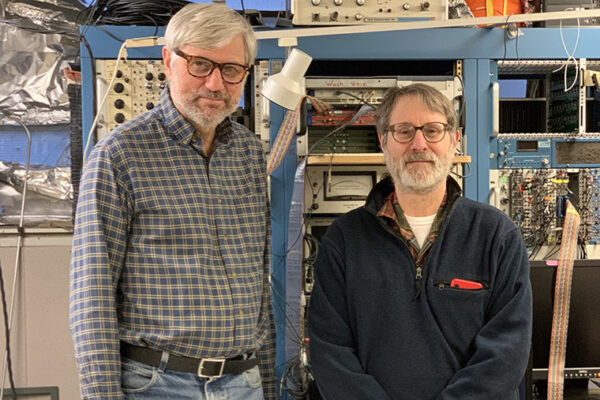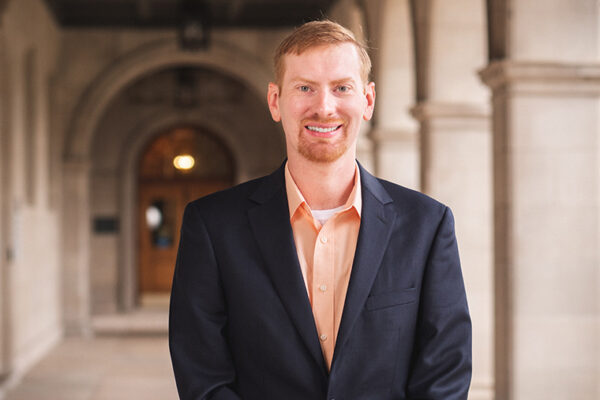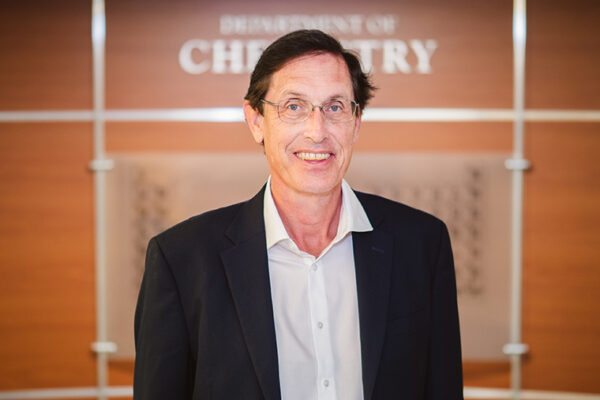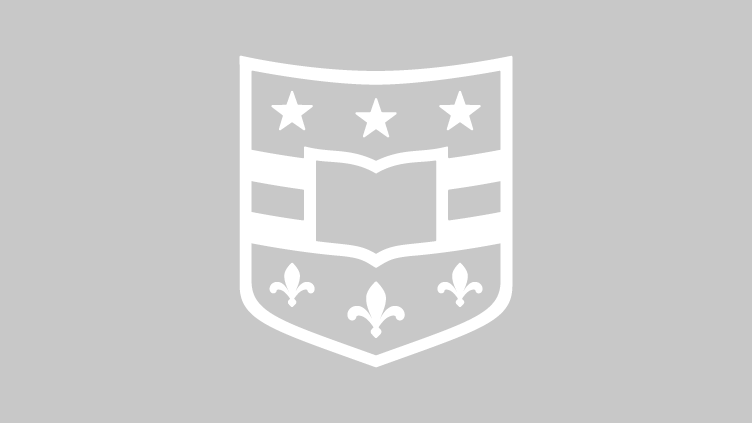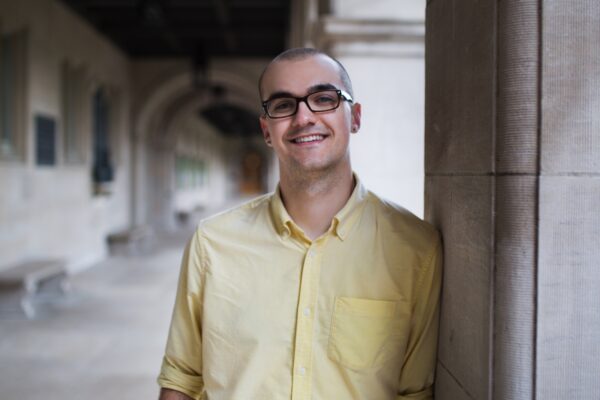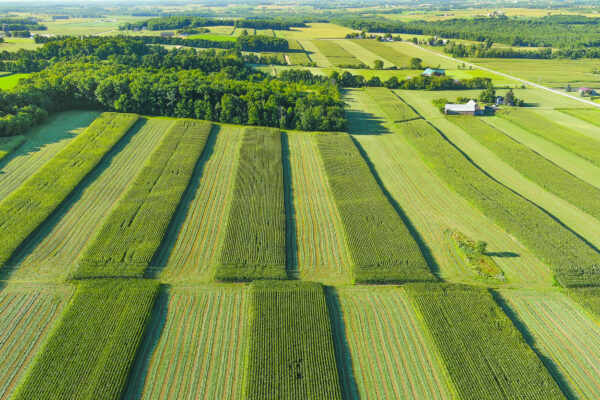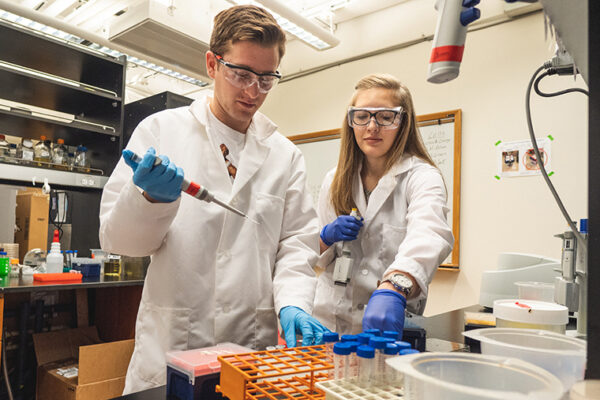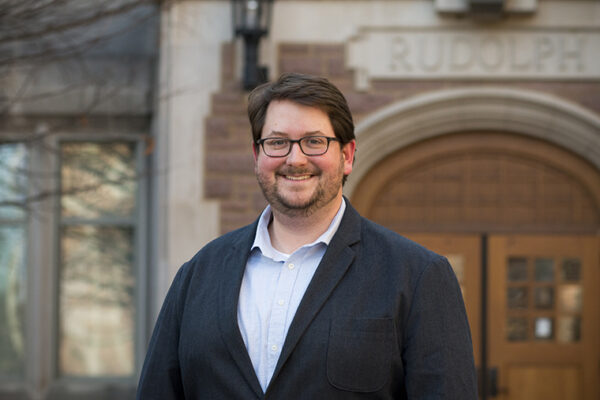Novel particle detector used to study alternate path to carbon creation in stars
A team that includes Lee Sobotka and Robert Charity, both in Arts & Sciences, concluded that the role that neutrons play in the creation of carbon, considered the definitive building block of life, is much smaller than previously thought.
Fournier wins molecular spectroscopy award
Joseph A. Fournier, assistant professor of chemistry in Arts & Sciences, is the winner of the 2022 Flygare Award, given biannually by the International Symposium on Molecular Spectroscopy.
Ponder to study protein-ion binding
Chemist Jay Ponder, in Arts & Sciences, received a $152,775 supplemental award from the National Institutes of Health (NIH) for protein-ion binding research.
Reichhardt to continue cystic fibrosis research
Courtney Reichhardt in Arts & Sciences received a $110,000 postdoc-to-faculty transition award from the Cystic Fibrosis Foundation to continue researching the disease.
Moyle wins Next Generation Investigation Award
Austin Moyle, a chemistry graduate student working with Michael Gross in Arts & Sciences, won a Next Generation Investigator Award from the California Separation Science Society.
Scientists detect world’s lightest magnesium
A new isotope of magnesium — magnesium-18 — was discovered by a team that includes Robert Charity, research professor of chemistry, and Lee Sobotka, professor of chemistry and of physics, both in Arts & Sciences, as reported in the journal Physical Review Letters.
Mitigating environmental impact of herbicides
Research from the lab of Kimberly Parker at the McKelvey School of Engineering looks at the interactions of different herbicides and what they mean for herbicide drift.
Lodders and Fegley to study stellar chemistry
Katharina Lodders, research professor, and Bruce Fegley, professor, both in the Department of Earth and Planetary Sciences in Arts & Sciences, won a $505,505 grant from the National Science Foundation for stellar chemistry research.
Ryan receives fellowship from NIH
Jeremy Ryan, a graduate student working with Meredith Jackrel in the Department of Chemistry in Arts & Sciences, won a three-year $123,090 fellowship from the National Institutes of Health (NIH).
Krawczynski receives NSF grant
Michael J. Krawczynski in Arts & Sciences received a three-year $178,445 grant from the National Science Foundation for a collaborative petrology and geochemistry research project.
Older Stories
